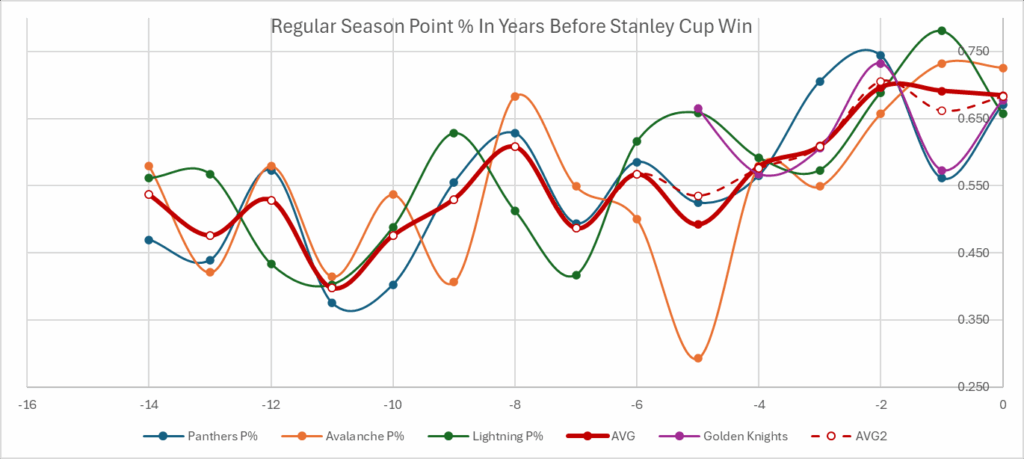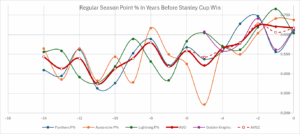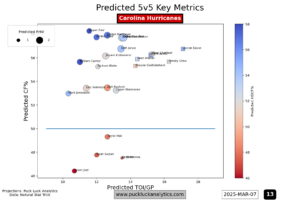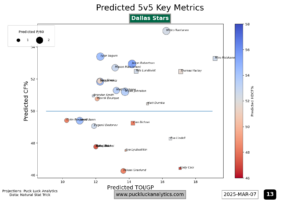The Florida Panthers won the 2024 Stanley Cup after a rise from a rebuild. Their cup winning roster was more than a decade in the making. In an effort to understand what a makes a rebuild succeed, I decided to dig into the transactions that built the Panthers cup winning roster.
Early Roots
The earliest roots of the Panthers 2024 roster go back to the pre salary cap era. After a run to the 1996 Stanley Cup Final, the Panthers made the playoffs again in 1997 and 2000. After that, they tumbled to the bottom of the NHL standings. Despite numerous picks in the top 10, they toiled away for a decade without notable improvement.
There were, however, a couple of draft picks that would eventually lead to the cup winning roster in 2024.
In 2002, they selected Gregory Campbell with their own 3rd round pick (67th overall) which they had previously traded to the New York Islanders before re-acquiring it for Eric Godard.
In 2003, they traded the 1st overall pick to the Pittsburgh Penguins and acquired the 3rd overall pick in a pick swap deal at the draft. The Penguins would select Marc-Andre Fleury 1st overall, while the Panthers took Nathan Horton 3rd overall.
Contention Cohort Beginnings
Drafting early and often is the clearest path to assembling a cohort that is capable of leading a team to a Stanley Cup championship. It’s not enough to just have the picks though, as the Panthers showed us in the early 2000s. Drafting and development needs to be done well and the roster needs to be molded and re-shaped around the initial group.
While there are a couple of roots going back pre-salary cap, the real beginnings of the Panthers ascent to the Stanley Cup began at the 2010 draft. They had 13 picks that year, including 3 first rounders. Their own was 3rd overall, which they used to select Eric Gudbranson. Nathan Horton and Gregory Campbell were packaged in a deal with the Boston Bruins, bringing the Panthers the 19th overall pick which they used to select Nick Bjugstad.

The 2010 draft was the beginnings of the Panthers’ contention cohort. They continued to pick early for the next few years; adding Jonathan Huberdeau and Vincent Trocheck in 2011, Mike Matheson in 2012, Aleksander Barkov and MacKenzie Weegar in 2013 and Aaron Ekblad in 2014.
Early Acceleration
By the end of the 2014 draft, the Panthers had a solid group of young players to start building around and they started to see improvement at the team level. A 66 point campaign in 2013-2014 became 91 in 2014-2015 and 103 in 2015-2016. The Panthers were on the right track.
We can take some lessons on what not to do after early in the development of a contention cohort from what happened next. After their quick riser back to relevance, the Panthers front office decided it was time to go for it and began trading away draft picks for deadline rentals. The mid 2010s saw them add players like Jaromir Jagr, Jiri Hudler, Anton Stralman, and Thomas Vanek in deals that eroded long term value from their roster.

It didn’t pay off. The Panthers had the initial building blocks with their contention cohort but they didn’t replenish their roster depth to the extent necessary to push their way into the cup contender tier. After their 103 point season in 2015-2016, the Panthers stumbled out of the playoff picture for the following three seasons.
Secondary Cohort
After three seasons out of the playoffs, there was a shift in the Panthers strategy. They held onto their picks and regenerated assets, accumulating 9 picks in each of the 2019 and 2020 drafts. Nick Bjugstad and Alex Petrovic, both from the 2010 draft, were moved for picks. They added Spencer Knight, Cole Schwindt, Emil Heineman, Devon Levi and Anton Lundell in the 2019 and 2020 drafts. Not as strong a group as their contention cohort, but still a good collection of prospects.

Refining the Roster
Anton Lundell, of course, became a regular in Florida and hoisted the cup in 2024. But that’s not all the Panthers accomplished by assembling the secondary cohort. Along with what remained of the contention cohort, the Panthers had accumulated enough roster value that they were able to re-shape the roster through the trade market, consolidating assets into higher impact players.
Over the course of 2021 and 2022, the Panthers consolidated future draft picks and assets from their contention cohort and secondary cohort into impact players that fit their contention cohort age group. Brandon Montour (2014) was acquired for a 3rd round pick. Sam Bennett (2014) was acquired for a 2nd round pick and Emil Heineman (Pick + secondary cohort). Sam Reinhart (2014) was acquire for a pick and Devon Levi (Pick + secondary cohort).

Finally, the Panthers took a huge swing to acquire Matthew Tkachuk (2016) for a 1st round pick, Jonathan Huberdeau, MacKenzie Weegar and Cole Schwindt. Not only did this deal consolidate a number of good assets into a great player early in his prime, it finished shifting the Panthers contention cohort to the 2013-2016 drafts by offloading Huberdeau (2011) and Weegar (2013) with other notable picks from the 2010 to 2012 drafts already gone. That put the contention cohort right in their prime and truly opened their cup window. (And yes, Cole Schwindt is the connection from Gregory Campbell and Nathan Horton to Matthew Tkachuk.)
The Rebuild Timeline
While did a deep dive on the Panthers cup winning roster, an inspection of some key elements of other recent cup winners seems to tell a similar story. Normalizing regular season point percentage to ‘years before cup win’ for the Panthers, Avalanche and Lightning shows they share a similar slow progression up the standings. Even the Golden Knights seem to follow the trend reasonably well for their brief existence before their first championship.

And it’s not just regular season performance that seems to be common. Aside from the Golden Knights, these teams all executed deep rebuilds. They drafted a contention cohort approximately a decade before their cup win picking early and often for about 3 consecutive drafts. And they added a secondary cohort approximately 4-5 years before winning it all with 2 consecutive drafts where they picked often again.
Rebuilds start with a bottom out and high picks but that’s not enough on it’s own to expect a championship banner to follow.



